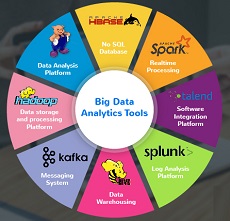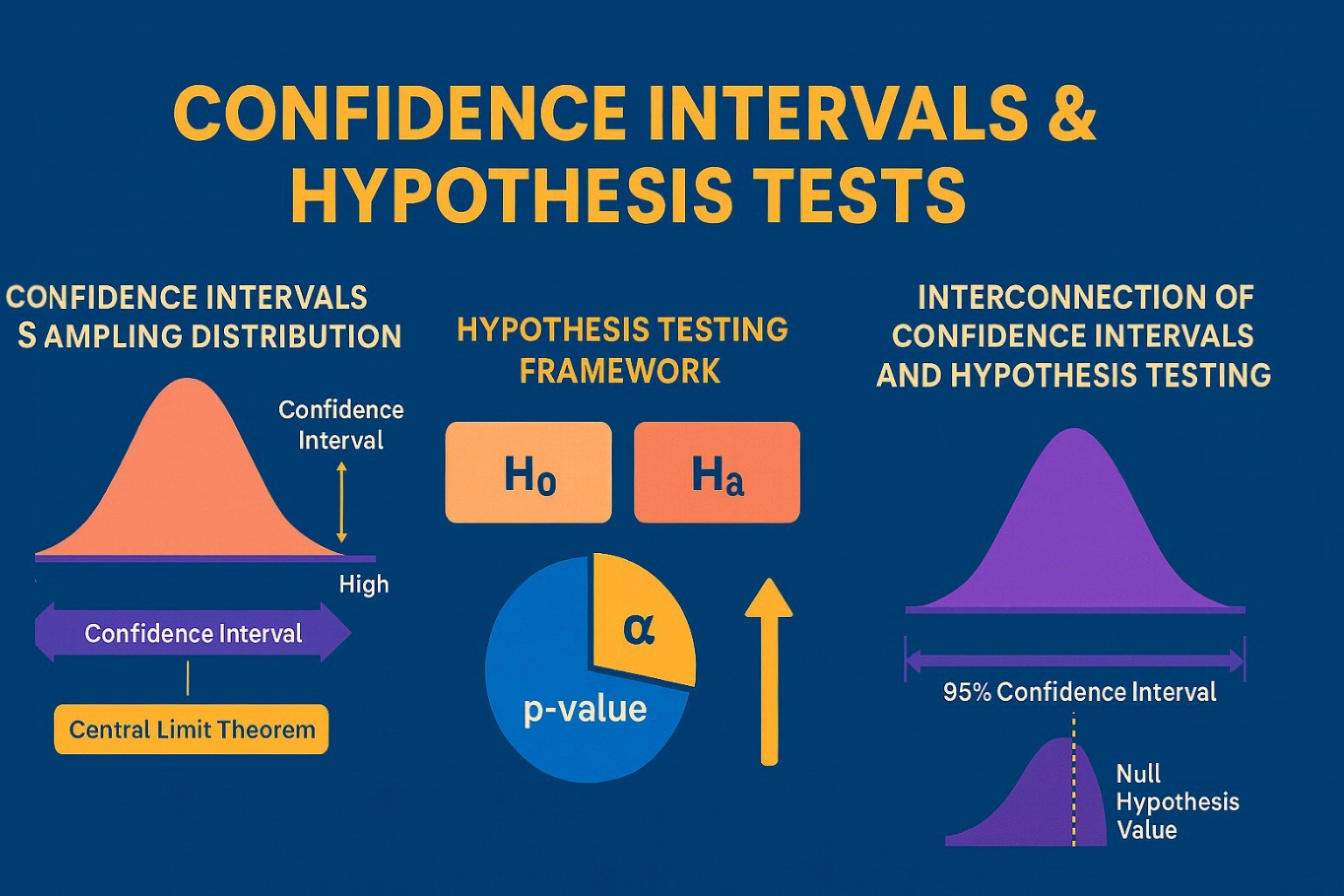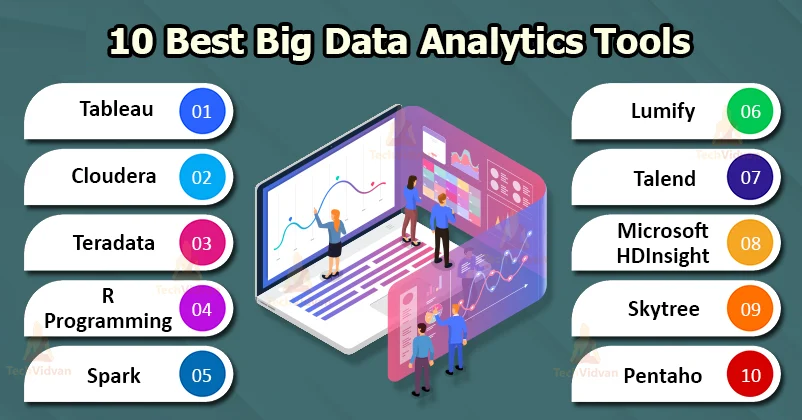AWS Big Data Certification Dumps Questions to Practice Exam Preparation

Big Data Certification:
The AWS certified big data specialist certification exam is based on six main domains. They are data collection, data storage, data processing, data analysis, data visualization, and data security. With the help of this certification, you will gain basic knowledge of operational features of data collection, select a data collection system and identify the data order, data structure, metadata, understand the data access and retrieval, understand data structure and format for storage. Design the data architecture for data solutions, the various tools and technologies for data analysis, design the visualization platform, encryption technologies, and their implementation, data integrity, and regulatory requirements.
Benefits of the Certification:
The AWS certified big data specialist certification validates your knowledge of big data services and architectural best practices. You will learn to leverage the big data tools and use them. You can leverage your certification to start your career in a booming domain.
Benefits to your Career:
International data corporation (IDC) has predicted that there is a shortage of big data professionals, and the demand continues to increase in the future. Gartner identified that machine learning and artificial intelligence continue to take a stride. Augmented analytics, embedded analytics will be the new technologies in the near future which will make their footprints. AWS certified big data certification would be a stepping stone to a great career in the big data world. This aws big data specialty certification will make your employers confident to hire you.
AWS Big Data Certification Sample Questions to Achieve Passing Score
Certification in Amazon Web Service Certified Big data specialist will endorse your skills in the design and implementation of the AWS services on the data set. This Big Data certification is useful for all IT professionals who are switching their career to big data.
We have compiled aws big data certification questions and answers in a multiple-choice pattern along with the correct answers. For your understanding, we have given the explanation for the correct answer. These aws big data certification dumps will be a quick recap before you appear at aws big data exam. It’s a memory stimulator and aws big data certification practice exam to check your ability before you appear for your big data certification exam.
These aws big data exam questions are prepared as a study guide to test your knowledge and answering skills while appearing in the test. You can evaluate your marks after completing the test with the help of these aws big data certification sample questions. We wish you all the success in your certification exam.
Exam details: AWS certified big data specialist
Exam name: AWS Big data specialty certification
Duration: 180 minutes
No. of questions: two sets; MCQ and multiple response
Passing score: pass/fail
Validated against: AWS
Format: MCQ
Exam price: $300
1. From the below-mentioned option, what are the five V"s of big data?
A. Volume and velocity.
B. Velocity and variety
C. Variety and varsity
D. Varasity and value.
E. All of the above
Explanation- big data has the five V"s, they are volume, velocity, varsity, variety, and value. Volume represents the amount of data that is growing at a high rate. Velocity is the speed at which the data is growing. Variety means various types of data. Varsity symbolizes to the uncertainty of available data. Value symbolizes to value received by turning data.
------------------------------------------------------------------------------------------------------------------------------
2. Mention from the below option which is the true port number for namenode?
A. Port 50070
B. Port 50060
C. Port 50030
D. Port 50050
Explanation- port 50060 is used in task tracker. Port 50030 is used in job tracker. There is no port number like 50050. Hence the correct option is A.
------------------------------------------------------------------------------------------------------------------------------
3. Explain which of the following statement is true.
A. The input data is divided into blocks for processing. This is done by HDFS
B. Input splits help to divide data into blocks for processing.
C. HDFS helps for the logical division of data by mapper for making operation.
D. None of the above.
E. All of the above.
Explanation- for the logical division of data by mapper for making operation is done by input split. And the blocks which are formed by dividing the input data by HDFS are known as HDFS blocks. Hence options B and C are false and the correct option is A.
------------------------------------------------------------------------------------------------------------------------------
4. How many methods are there of reducer?
A. Two
B. Three
C. One
D. Four
Explanation- there are three methods of reducer. Setup reduced and clean up. The setup helps in configuration of various parameters that include hip size, input data, distributed cache whereas reduced method helps to reduced the task and is called once and operates for per key. The cleanup method functions by clearing all temporary files and it is the method that operates after the reduced method is applied.
----------------------------------------------------------------------------------------------------------------------------
5. Mention from the below option which is the true port number for job tracker?
A. Port 50070
B. Port 50060
C. Port 50030
D. Port 50050
Explanation- port 50060 is used in task tracker. Port 50070 is used in namenode. There is no port number like 50050. Hence the correct option is C.
----------------------------------------------------------------------------------------------------------------------------
6. For processing the big data which of the following system is used?
A. Pig
B. Hadoop
C. Hive
D. Flume
E. All of the above
Explanation- For processing the big data the system used are Pig, Hadoop, Hive, Flume. All the mentioned options are correct. Hence the answer is all of the above.
------------------------------------------------------------------------------------------------------------------------
7. Mention whether the following statement is true or false?
The use of JBS command is for pasting the Hadoop daemons working.
A. True
B. False
C. Partly true partly false
D. None of the above
Explanation- for checking that Hadoop daemons are working correctly or not JBS command is used. The daemons, its focus on namenode, datanode, resource manager, etc.
--------------------------------------------------------------------------------------------------------------------------------
8. Mention from the below option which is the true port number for task tracker?
A. Port 50070
B. Port 50060
C. Port 50030
D. Port 50050
Explanation- port 50070 is used in namenode. Port 50030 is used in job tracker. There is no port number like 50050. Hence the correct option is B.
------------------------------------------------------------------------------------------------------------------------------
9. From the option mentioned below, which of the method is a core method of reducer?
A. Setup
B. Reduced
C. Cleanup
D. All of the above
Explanation- there are three methods of reducer. Setup reduced and clean up. The setup helps in configuration of various parameters that include hip size, input data, distributed cache whereas reduced method helps to reduced the task and is called once and operates for per key. The cleanup method functions by clearing all temporary files and it is the method that operates after the reduced method is applied.
--------------------------------------------------------------------------------------------------------------------------------
10. How many tombstone maker is used for performing delete work in HBase?
A. Four
B. Two
C. Five
D. Three
Explanation- there is three main tombstone marker used in HBase for deletion. They are - family delete maker, version delete maker, and column delete marker. Family delete marker helps to mark all the columns that belong to a column family. Version delete marker marks a single version of a single column. Whereas column delete marker marks all the version of one single column.
-------------------------------------------------------------------------------------------------------------------------------
11. Mention which of the following statement is true from the option mentioned below.
A. A column delete marker is used for marking of a column of a family.
B. A column delete marker is used to mark a single version of a single column.
C. A column delete marker is used for marking all the version of a single column.
D. All of the above.
Explanation- there is three main tombstone marker used in HBase for deletion. They are - family delete maker, version delete maker, and column delete marker. Family delete marker helps to mark all the columns that belong to a column family. Version delete marker marks a single version of a single column. Whereas column delete marker marks all the version of one single column.
--------------------------------------------------------------------------------------------------------------------------------
12. Mention which of the following statement is true from the option mentioned below.
A. A family delete marker is used for marking of the column of a family.
B.family delete marker is used to mark a single version of a single column.
C. A family delete marker is used for making all the version of a single column.
D. All of the above.
Explanation- there is three main tombstone marker used in HBase for deletion. They are - family delete maker, version delete maker, and column delete marker. Family delete marker helps to mark all the columns that belong to a column family. Version delete marker marks a single version of a single column. Whereas column delete marker marks all the version of one single column.
--------------------------------------------------------------------------------------------------------------------------------
13. Mention which of the following statement is true from the option mentioned below.
A. A version delete marker is used for marking of the column of a family.
B. A version delete marker is used to mark a single version of a single column.
C. A version delete marker is used for making all the version of a single column.
D. All of the above.
Explanation- there is three main tombstone marker used in HBase for deletion. They are - family delete maker, version delete maker, and column delete marker. Family delete marker helps to mark all the columns that belong to a column family. Version delete marker marks a single version of a single column. Whereas column delete marker marks all the version of one single column.
-------------------------------------------------------------------------------------------------------------------------------
14. What is the full form of FSCK?
A. File system check
B. Format system and check
C. FILE SYSTEMATILCAALY AND CHECK
D.NONE OF THE ABOVE
Explanation- FSCK denotes file system check which is a command used in Hadoop to run a summary report Describing the state of HDFS.
-----------------------------------------------------------------------------------------------------------------------------
15. From the below-mentioned options which are the steps used in big data solution?
A. Data ingestion
B. Data storage
C. Process the data
D. All of the above
Explanation- - there are three steps involved in big data solution data ingestion, data storage, and data processing. The process starts with data ingestion in which data is extracted from different sources. In the next step that is data storage in which data is stored in HDFS or NoSQL, a database like HBase. The last step is Data processing in which data is processed from one of the processing frameworks such as a spark, MapReduce, and hive.
------------------------------------------------------------------------------------------------------------------------------
16. From the below-mentioned options which of the following are input format in Hadoop?
A. Text input format
B. Key-value input format
C. Sequence file input format.
D. All of the above
Explanation- there are three common input format used in Hadoop, text input format, key-value input format, and sequence file input format. In which text input format is default input format, on the other hand for Plain text and a situation in which files are broken into lines key-value input format is used. For reading the file in sequence, the sequence file input format is used.
------------------------------------------------------------------------------------------------------------------------------
17. How many types of data locality is there?
A. Three
B. Two
C. Five
D. Four
Explanation- data local, rack local and different rack are the three localities of data.
--------------------------------------------------------------------------------------------------------------------------------
18. From the below-mentioned option which of the following is included in data locality?
A. Data local
B. Rack local
C. Different rack
D. All of the above.
Explanation- data local, rack local and different rack are the three localities of data.
--------------------------------------------------------------------------------------------------------------------------------
19. From the below-mentioned option, what is the correct sequence for the namenode recovery process?
A 1. Building new namenode.
2. Configuring datanode and client
3. Serving the clients is done by new namenode
B. 1. Configuring datanode and client
2. Building new namenode
3. Serving the clients is done by new namenode
C . 1. Building new namenode.
2. Serving the clients is done by new namenode
3. Configuring datanode and client
D. 1. Serving the clients is done by new namenode
2. Building new namenode
3. Configuring datanode and client
Explanation- In the recovery process the very first step occurs is of starting a namenode which is done by file system Mata data replica. After that configuration of data nodes and clients are done. In the last process, the client is served by new namenode.
-------------------------------------------------------------------------------------------------------------------------------
20. What is the step that occurs if namenode doesn"t have any kind of data?
A. It appears blank.
B. Namenode doesn"t exist
C. It takes default data
D. All of the above
E. None of the above
Explanation- if namenode doesn"t have any data, it doesn"t exist in Hadoop. If Hadoop contains any namenode, surely, it will have some data.
------------------------------------------------------------------------------------------------------------------------------
21. How many processes are there for overwriting the replication factor in HDFS?
A. Two
B. Three
C. Four
D. Five.
Explanation- there are two methods for overwriting the replication factors in HDFS. One is on a file basis another is on a directory basis.
-------------------------------------------------------------------------------------------------------------------------------
22. How many basic parameters are there for mapper?
A. Two
B. Three
C. Four
D. Five
Explanation- there are two basic parameters of mappers i.e longWritable and second is text and intWritable.
------------------------------------------------------------------------------------------------------------------------------
23. From the option mentioned below which is the correct method for restarting the daemons (all) in Hadoop?
A. Stop all the daemons and then in Hadoop directory, there is a spin directory which contains script file for stopping the daemons and starting it again.
B. Stoping the daemons by using stop daemon command "/sbin/stop-all.sh" and then by using the start command "/sin/start-all.sh" to start the daemons again.
C. Both of the above.
D. None of the above
Explanation- for restarting the daemon in Hadoop there are two methods. First is Stop all the daemons and then in Hadoop directory, there is a spin directory which contains script file for stopping the daemons and starting it again. And another is Stoping the daemons by using stop Deamon command "/sbin/stop-all.sh" and then by using the start command "/sin/start-all.sh" to start the daemon again. Both methods can be performed and will provide the same result. Hence the correct option is option C.
-------------------------------------------------------------------------------------------------------------------------------
24. Mention whether the following statement is true or false?
Agenode and gateway nodes are the same things and age nodes performs as an interface between the external network and the Hadoop cluster.
A. True
B. False
C. Partly true and partly false
D. None of the above
Explanation- agenode and gateway nodes are two different things. In Hadoop for performing an interface between Hadoop cluster and external network age nodes refers to gateway nodes. Hence this statement is partly true and partly false.
-----------------------------------------------------------------------------------------------------------------------------
25. From the below-mentioned option which statement is incorrect about FSCK?
A. Fsck is the command used in Hadoop
B. Fsck checks the error in Hadoop summary report
C. Fsck does correction of the error in Hadoop summary report
D. Fsck command functions on the whole system also.
Explanation:
Fsck is the command used in Hadoop and its function on Hadoop summary report, Fsck checks the error in Hadoop summary report and functions on the whole system and subset of files also. FSCK finds the error but does not correct it. Hence the correct option is option c.
--------------------------------------------------------------------------------------------------------------------------------
26. What is the correct sequence for the steps used in deploying a big data solution?
A. Data storage, data processing, data ingestion.
B. Data ingestion, data storage, data processing
C. Data processing, data storage, data ingestion.
D. Data ingestion, data processing, data storage.
Explanation- there are three steps involved in big data solution data ingestion, data storage, and data processing. The process starts with data ingestion in which data is extracted from different sources. In the next step that is data storage in which data is stored in HDFS or NoSQL, a database like HBase. The last step is Data processing in which data is processed from one of the processing frameworks such as a spark, MapReduce, and hive.
------------------------------------------------------------------------------------------------------------------------------
27. From the below-mentioned option which statement is correct about FSCK?
A. Fsck is the command used in Hadoop
B. Fsck checks the error in Hadoop summary report
C. Fsck does not perform the correction of the error in Hadoop summary report
D. Fsck command functions on the whole system also.
Explanation:
Fsck is the command used in Hadoop and its functions on Hadoop summary report, Fsck checks the error in Hadoop summary report and functions on the whole system and the subset of files also. FSCK finds the error but does not correct it. Hence the correct option is option c.
--------------------------------------------------------------------------------------------------------------------------------
28. Mention whether the following statement is true or false?
Dfs is better than Hadoop.
A. True
B. False
C. Partly true and partly false
D. None of the above
Explanation- Hadoop is better because Hadoop not only has big storage but also process the big data very nicely. Dfs has fault-tolerant and data movement depend on a network which is further depended on bandwidth.
----------------------------------------------------------------------------------------------------------------------------
29. From the below-mentioned option which is the incorrect statement about Hadoop and dfs.
a. Hadoop function was better than dfs.
b. Hadoop not only have big storage but also process the big data very nicely.
c. Dfs has fault-tolerant.
d. dfs is better than Hadoop.
Explanation- Hadoop is better because Hadoop not only has big storage but also process the big data very nicely. Dfs has fault-tolerant and data movement depend on a network which is further depended on bandwidth. Hence Hadoop is better than dfs.
Find a course provider to learn Big Data
Java training | J2EE training | J2EE Jboss training | Apache JMeter trainingTake the next step towards your professional goals in Big Data
Don't hesitate to talk with our course advisor right now
Receive a call
Contact NowMake a call
+1-732-338-7323Take our FREE Skill Assessment Test to discover your strengths and earn a certificate upon completion.
Enroll for the next batch
big data full course
- Dec 10 2025
- Online
big data full course
- Dec 11 2025
- Online
big data full course
- Dec 12 2025
- Online
Related blogs on Big Data to learn more

What is Big Data – Characteristics, Types, Benefits & Examples
Explore the intricacies of "What is Big Data – Characteristics, Types, Benefits & Examples" as we dissect its defining features, various types, and the tangible advantages it brings through real-world illustrations.

Top 10 Open-Source Big Data Tools in 2024
In the dynamic world of big data, open-source tools are pivotal in empowering organizations to harness the immense potential of vast and complex datasets. Moreover, as we enter 2024, the landscape big data tools and technologies continues evolving be

Top 25 Big Data Questions and Answers for Certification Passing score
You can appear for big data certification exam with confidence and come out with certification. We have prepared a bunch of important big data exam questions along with the correct answer and the explanation for the right answer. Utilize these sample

Sixth Edition of Big Data Day LA 2018 - Register Now!
If you’re keen tapping into the advances in the data world, and currently on a quest in search engines, looking for Big Data conferences and events in the USA, there is a big one coming up your way! Yes, the sixth annual edition of Big Data Day LA

15 Popular Big Data Courses to learn for the future career
We have found a list of big data courses that are necessarily required for the future. Professionals and freshmen who are learning these courses prepare the participants to see bigdata careers with high pay jobs.

Best countries to work for Big Data enthusiasts
China is fast becoming a global leader in the world of Big Data, and the recently held China International Big Data Industry Expo 2018

Top Institutes to enroll for Big Data Certification Courses in NYC
If achieving a career breakthrough is hard, harder is sustaining a long-run. Why? Organizations are focusing on New Yorkers who can work dynamically and leverage their skills from the word go, and that’s why.

The emergence of Cloudera
Cloudera is the leading worldwide platform provider of Machine Learning. There is reportedly an accelerated momentum in the Cybersecurity market.

Why there is a need to fill the skill gap to land in a Hadoop and Big Data career?
The world is witnessing the tremendous learning of Big Data platform and artificial intelligence associated with it. The demand for Analytics skill is going up steadily but there is a huge deficit on the supply side.
Latest blogs on technology to explore

From Student to AI Pro: What Does Prompt Engineering Entail and How Do You Start?
Explore the growing field of prompt engineering, a vital skill for AI enthusiasts. Learn how to craft optimized prompts for tools like ChatGPT and Gemini, and discover the career opportunities and skills needed to succeed in this fast-evolving indust

How Security Classification Guides Strengthen Data Protection in Modern Cybersecurity
A Security Classification Guide (SCG) defines data protection standards, ensuring sensitive information is handled securely across all levels. By outlining confidentiality, access controls, and declassification procedures, SCGs strengthen cybersecuri

Artificial Intelligence – A Growing Field of Study for Modern Learners
Artificial Intelligence is becoming a top study choice due to high job demand and future scope. This blog explains key subjects, career opportunities, and a simple AI study roadmap to help beginners start learning and build a strong career in the AI

Java in 2026: Why This ‘Old’ Language Is Still Your Golden Ticket to a Tech Career (And Where to Learn It!
Think Java is old news? Think again! 90% of Fortune 500 companies (yes, including Google, Amazon, and Netflix) run on Java (Oracle, 2025). From Android apps to banking systems, Java is the backbone of tech—and Sulekha IT Services is your fast track t

From Student to AI Pro: What Does Prompt Engineering Entail and How Do You Start?
Learn what prompt engineering is, why it matters, and how students and professionals can start mastering AI tools like ChatGPT, Gemini, and Copilot.

Cyber Security in 2025: The Golden Ticket to a Future-Proof Career
Cyber security jobs are growing 35% faster than any other tech field (U.S. Bureau of Labor Statistics, 2024)—and the average salary is $100,000+ per year! In a world where data breaches cost businesses $4.45 million on average (IBM, 2024), cyber secu

SAP SD in 2025: Your Ticket to a High-Flying IT Career
In the fast-paced world of IT and enterprise software, SAP SD (Sales and Distribution) is the secret sauce that keeps businesses running smoothly. Whether it’s managing customer orders, pricing, shipping, or billing, SAP SD is the backbone of sales o

SAP FICO in 2025: Salary, Jobs & How to Get Certified
AP FICO professionals earn $90,000–$130,000/year in the USA and Canada—and demand is skyrocketing! If you’re eyeing a future-proof IT career, SAP FICO (Financial Accounting & Controlling) is your golden ticket. But where do you start? Sulekha IT Serv

Train Like an AI Engineer: The Smartest Career Move You’ll Make This Year!
Why AI Engineering Is the Hottest Skillset Right Now From self-driving cars to chatbots that sound eerily human, Artificial Intelligence is no longer science fiction — it’s the backbone of modern tech. And guess what? Companies across the USA and Can

Confidence Intervals & Hypothesis Tests: The Data Science Path to Generalization
Learn how confidence intervals and hypothesis tests turn sample data into reliable population insights in data science. Understand CLT, p-values, and significance to generalize results, quantify uncertainty, and make evidence-based decisions.
